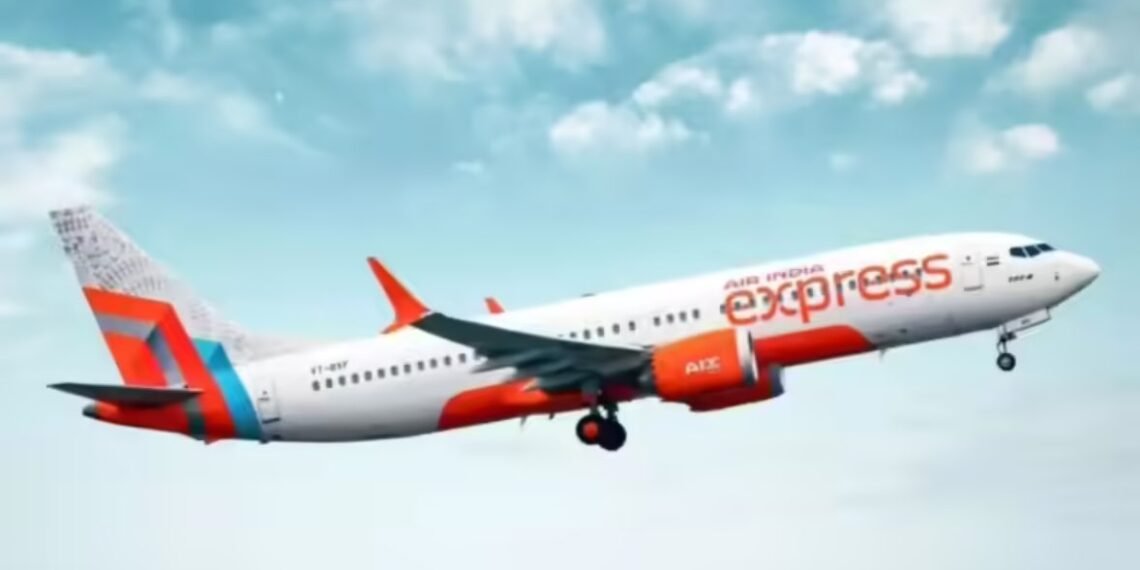Flight IX110 to Phuket returned to Hyderabad hours after an IndiGo aircraft turned back to Delhi due to a snag. Aviation experts are urging greater scrutiny.
BY PC Bureau
In another mid-air scare highlighting a growing trend of in-flight technical issues, an Air India Express flight bound for Phuket was forced to return to Rajiv Gandhi International Airport in Hyderabad shortly after takeoff on Saturday morning.
Flight IX110, operated on a Boeing 737 Max 8 aircraft (registration VT-BWA), took off at 6:40 am—roughly 20 minutes behind its scheduled departure of 6:20 am. According to live flight tracking data from FlightRadar24, the aircraft was en route to land in Phuket by 11:45 am but turned around not long after departure and returned safely to Hyderabad. While the airline has yet to release a formal statement, sources confirmed that the return was precautionary in nature.
This is the latest in a string of technical issues affecting flights operated by Indian airlines in recent weeks.
IndiGo Hit by Series of Technical Setbacks
Earlier this week, an IndiGo flight from Delhi to Imphal (6E-5118) experienced a minor technical snag shortly after takeoff. The Airbus aircraft, which took off from Indira Gandhi International Airport at 10:25 am on July 17, turned back and landed safely in Delhi at 11:16 am. After undergoing necessary technical checks, it resumed its journey at 12:30 pm and landed in Imphal at 2:53 pm—more than an hour later than the scheduled arrival time of 1:10 pm.
READ: Sharda University student dies by suicide, 2 professors arrested
READ: Meghalaya Horror: Schoolgirl Hacked to Death, Killer on the Run
READ: Hostel Horror: 19-Year-Old Odisha Student Sets Herself Ablaze, Dies
IndiGo later confirmed the incident in a statement: “A minor technical snag was detected soon after takeoff on flight 6E-5118 operating from Delhi to Imphal. As a precautionary step, the pilots decided to return and landed safely at Indira Gandhi International Airport. The aircraft underwent necessary checks and resumed the journey shortly thereafter.” The airline added that it regrets the inconvenience caused to passengers.
🚨 BREAKING
Air India Express flight IX110 to Phuket RETURNS to Hyderabad shortly after takeoff from RGIA!✈️ Boeing 737 Max 8 turned back soon after 6:40 AM departure.
📍 Reason not disclosed yet.#AirIndiaExpress #Hyderabad #FlightIX110 #BreakingNews #Phuket pic.twitter.com/WwTyxEpiJ7— News now (@_news__now) July 19, 2025
However, this was not an isolated incident for IndiGo.
- On June 19, an IndiGo flight (6E-6271) from Delhi to Goa reportedly suffered an engine failure mid-air. The pilots diverted the flight to Mumbai, where it landed safely.
- In another recent case, a Leh-bound IndiGo flight was forced to return to Delhi after remaining airborne for nearly two hours due to a technical issue.
Safety Alarms Beyond Indian Carriers
Other international airlines have also reported in-flight emergencies involving Indian airports. On May 6, Aeroflot flight SU273 from Bangkok to Moscow made an emergency landing at Delhi airport after crew members reported suspected fumes in the cabin. All passengers were evacuated safely, and the aircraft was grounded for inspection.
Similarly, in April, a Jeddah-Delhi flight carrying 404 passengers made an emergency landing at IGI Airport after a suspected flat tyre was detected mid-air. Fortunately, no injuries were reported in either case.
Pattern or Coincidence? Experts Call for Greater Oversight
Aviation analysts say that while technical snags are not uncommon in commercial aviation, the frequency of such occurrences in India over the past few months merits closer scrutiny.
“India has one of the fastest-growing aviation sectors, but infrastructure, maintenance schedules, and regulatory oversight need to grow with it,” said an aviation expert on condition of anonymity. “Multiple turnbacks in such a short span raise questions about both pre-flight inspection protocols and aircraft health monitoring systems.”
Despite the safe outcomes, the series of return flights and emergency landings is likely to prompt a renewed focus from the Directorate General of Civil Aviation (DGCA), which has been monitoring these incidents closely. While no major injuries or fatalities have occurred, the recurrence of technical issues has heightened passenger anxiety and led to calls for transparent reporting and stricter maintenance audits.
Airlines are also under pressure to reassure passengers while maintaining on-time performance—a balance that becomes harder to strike amid mounting scrutiny.
As air traffic continues to increase post-pandemic, the spotlight remains on Indian carriers to maintain their safety track record without compromise. Whether these incidents reflect random technical setbacks or a systemic lapse remains to be seen—but for now, the skies appear slightly more uncertain than usual.
.













